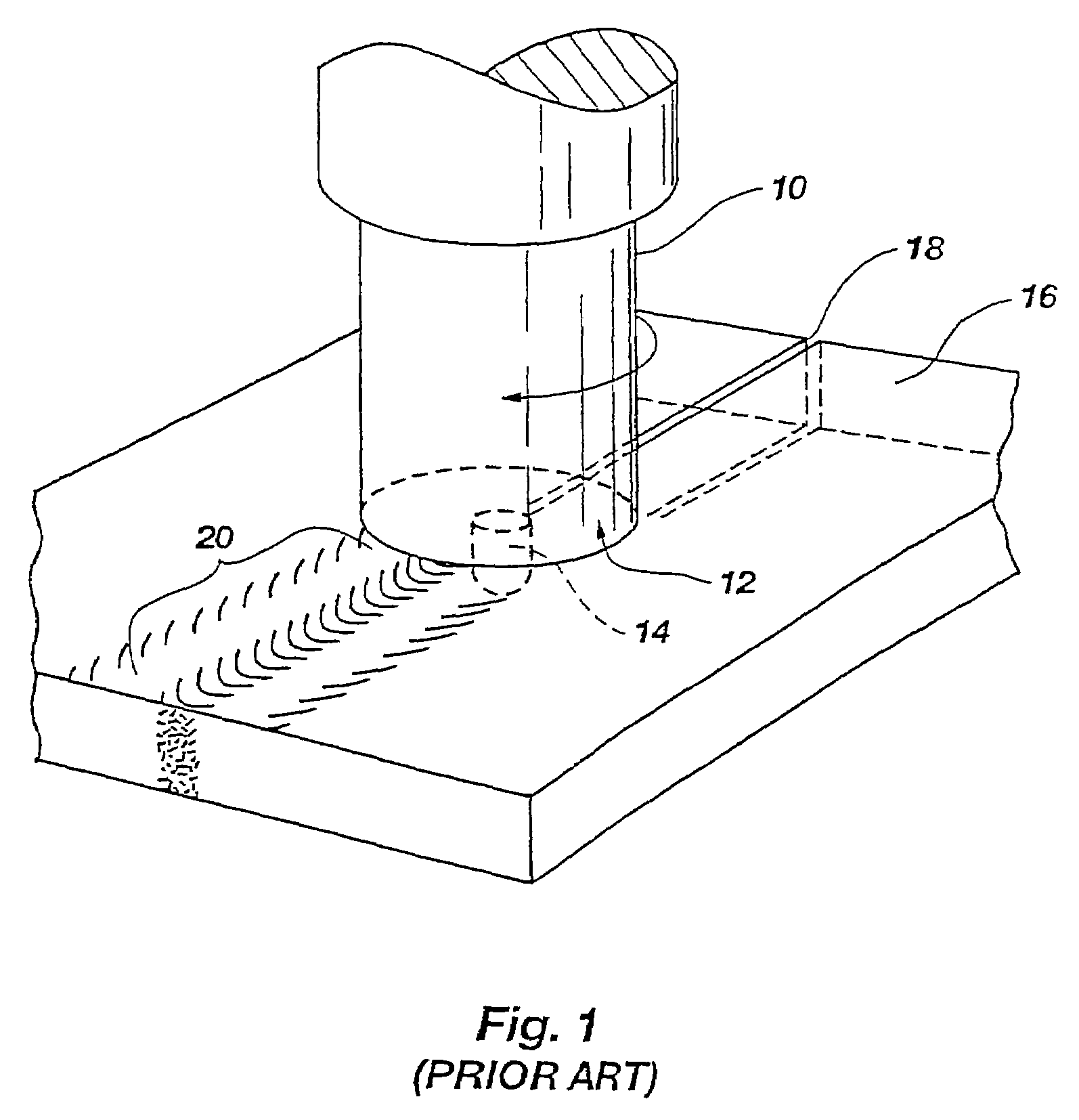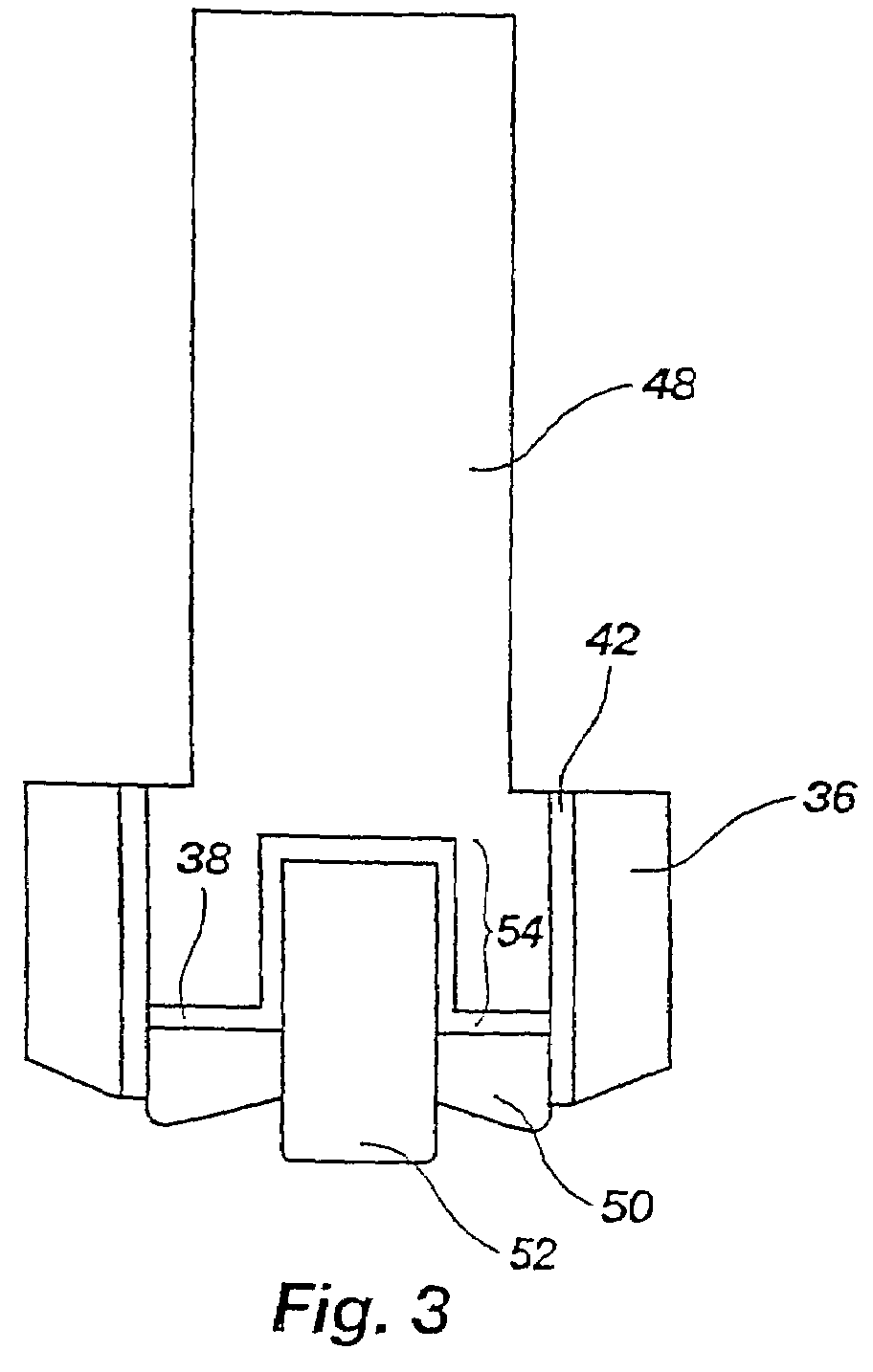Friction stir welding of metal matrix composites, ferrous alloys, non-ferrous alloys, and superalloys using a superabrasive tool
a technology of friction stir welding and superabrasion, which is applied in the direction of manufacturing tools, soldering devices, auxillary welding devices, etc., can solve the problems of compromising welds, reducing the resistance of stress risers, and reducing the strength of stress risers
- Summary
- Abstract
- Description
- Claims
- Application Information
AI Technical Summary
Benefits of technology
Problems solved by technology
Method used
Image
Examples
Embodiment Construction
[0055]Reference will now be made to the drawings in which the various elements of the present invention will be given numerical designations and in which the invention will be discussed so as to enable one skilled in the art to make and use the invention. It is to be understood that the following description is only exemplary of the principles of the present invention, and should not be viewed as narrowing the claims which follow.
[0056]The presently preferred embodiment of the invention is a tool that incorporates superabrasive materials in a pin and shoulder, and utilizes thermal management within the tool, to enable friction stir welding of materials that are presently functionally unweldable. Thus, the present invention makes possible long, continuous, and uninterrupted welds of MMCs, ferrous alloys, and superalloys without suffering significant degradation of the tool.
[0057]The development of the presently preferred embodiment presented significant challenges because conventiona...
PUM
| Property | Measurement | Unit |
|---|---|---|
| diameter | aaaaa | aaaaa |
| angle | aaaaa | aaaaa |
| angle | aaaaa | aaaaa |
Abstract
Description
Claims
Application Information
 Login to View More
Login to View More - R&D
- Intellectual Property
- Life Sciences
- Materials
- Tech Scout
- Unparalleled Data Quality
- Higher Quality Content
- 60% Fewer Hallucinations
Browse by: Latest US Patents, China's latest patents, Technical Efficacy Thesaurus, Application Domain, Technology Topic, Popular Technical Reports.
© 2025 PatSnap. All rights reserved.Legal|Privacy policy|Modern Slavery Act Transparency Statement|Sitemap|About US| Contact US: help@patsnap.com



